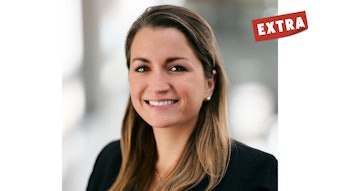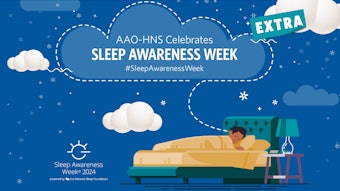Pearls from your Peers: Treatment of Acoustic Neuromas
Marc L. Bennett, MD, is joined by Robert Cullen, MD, to discuss treatment of acoustic neuromas.

Note: This article was originally published on April 23, 2021, and has been updated by the authors on March 4, 2024, with minor clarifications.
What are the common symptoms and signs you see in patients with acoustic neuromas?
Most people present with hearing loss. Occasionally people present with disequilibrium or unsteadiness. A small minority of patients can present with cerebellar signs, blurred vision, or headache.
How often do you work up unilateral sensorineural hearing loss and diagnose an acoustic neuroma?
It’s relatively uncommon—several times per year I will actually diagnose a vestibular schwannoma primarily; most patients with acoustic neuromas are referred to my practice with a known diagnosis.
What is your diagnostic workup for an acoustic neuroma, outside of an MRI?
MRI remains the gold standard. An audiogram also helps guide treatment recommendations. Vestibular testing is helpful in the decision process for some patients but is not routinely performed. We often obtain an ABR if hearing preservation surgery is an option for the patient to help determine potential for success.
What do you offer for patients who have a medical contraindication for an MRI?
For patients with medical contraindications like a spinal cord stimulator or internal defibrillator, we will order a CT scan of the temporal bones with contrast. In addition, ABR can be utilized, but MRI remains the gold standard.
How do you accommodate patients with claustrophobia?
For mild symptoms, we typically use diazepam to be taken as one to two tablets prior to the MRI. For more severe symptoms, we will use sedation, often in the form of a general anesthetic.
What are your standard treatment options?
We offer observation (serial imaging), surgery, and stereotactic radiation (Gamma Knife). We educate people on the benefits and risks of all treatments and allow them to choose the best option. For observation, we typically image every six months after the initial MRI. For tumors stable in size, imaging can be done less frequently over time, but long-term monitoring is still required.
Does age play into the treatment options?
We typically attempt to avoid radiation on younger patients due to concerns about long-term effects from radiation. For elderly patients, we are more likely to offer radiation. For both groups, we let the overall medical condition and the patient’s goals help dictate the treatment. Now that we have longer-term positive outcomes with radiation, there is an increased comfort with offering radiation to younger patient populations.
Do you see any common complications from radiation?
Complications are uncommon. The most common is hearing loss, which can occur suddenly but is more commonly progressive over time. We also see disequilibrium, that may be associated with tumor edema. Facial nerve complications are uncommon.
How often do you image patients after treatment?
For radiation, we start with imaging every six months, then yearly. For tumors with total resection, we image at one and five years. For those with subtotal resections, we image at three months, then yearly.
Do you routinely use balance therapy after treatment?
Balance therapy is important for patients with acoustic neuromas. After surgery, we typically give the patient one month or so for central compensation and then offer therapy for those still struggling. For younger and healthier patients, compensation occurs more quickly, and they have less of a need for formal vestibular therapy.
Are there any changes you anticipate in treatment of acoustic neuromas in the upcoming years?
I anticipate increasing frequency of radiation treatment. In addition, I see a role for cochlear implantation and hearing restoration in these patients. Many patients struggle with unilateral hearing loss, and this treatment shows promise in rehabilitating this symptom.




















